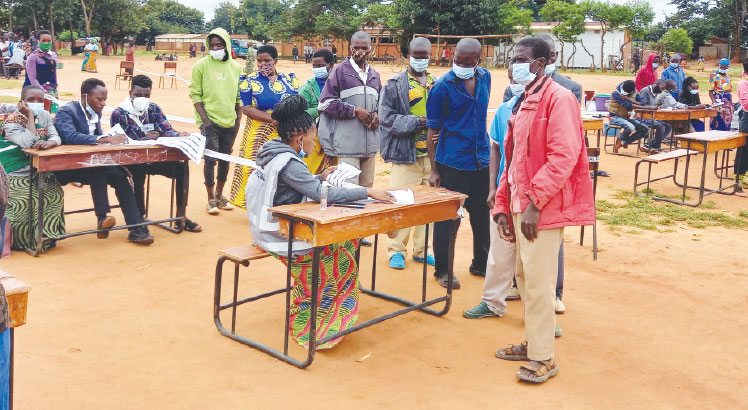Import maize from Zambia
That Malawi needs to import 1 290 000 metric tonnes (MT) of maize to feed its hungry 3 million cannot be disputed. This is because of the back-to-back low maize yields for 2014/15 and 2015/16 due to drought and floods last year, and drought this year.
In his State of the Nation Address (Sona) last week President Peter Mutharika said: “Maize production has declined by 12.4 percent in the 2015/16 growing season. Thus, maize production declined from about 2.8 million metric tons in 2014/15 growing season to about 2.4 million metric tons in 2015/16. The country will, therefore, experience a deficit over another deficit registered in the previous season. Over 3 million Malawians are expected to be food insecure.”
But this week, Minister of Agriculture, Irrigation and Water Development George Chaponda ballooned the figure of those that would require food aid to eight million.
Why the contradiction? I can guarantee that the President did not dream up that figure. He got it from the same ministry whose political head is Chaponda. And Chaponda knows that he and the President ought to speak the same the language all the time. Otherwise how will people trust him or the President on anything?
The contradiction between Mutharika and Chaponda aside, here is another bombshell.
Chaponda wants government to put aside a jaw-dropping K250 billion for the importation of the maize to feed the hungry Malawians because the maize will not be bought from the region. Really?
It is true the Southern Africa Development Community (Sadc) region in general will experience low maize yields this year compared to previous years. Except Zambia. And I am not saying this with tongue-in-cheek. This is fact.
It is a blue lie that Zambia—as Chaponda told Parliament on Monday this week—is in a similar situation as Malawi. Zambia is now the bread basket for this region. For over seven years now, Zambia has been a surplus maize producer and this year, while Malawi witnessed a reduction in maize production in the 2015/16 agriculture season, Zambia has recorded an increase with an output of 2 873 052 MT. This is an increase of 9.73 percent from the 2 618 221 MT produced 2014/15.
In addition to this, there is carry-over stock amounting to 667.524 MT as at May 1, 2016. The Zambia Food Reserve Agency (FRA) is holding 360 648 MT, the Grain Traders Association of Zambia (GTAZ) 207 771 MT, Zambia National Farmers Union (ZNFU) 36 701 MT while small and medium scale farmers hold about 38 751 MT. When compounded, the 2015/2016 agricultural season will have 3 540 577 MT.
This is against the local consumption demand of 2.3 million MT for domestic and industrial use. So if truth be told, Zambia is teeming with maize.
Zambia is now strategising on how best to cash in on this surplus maize. I have it on authority that Zambia will be taking advantage of the current maize deficit in the region to maximise market advantage within the Sadc and Common Market for Eastern and Southern Africa (Comesa) regions.
Currently, Zambia is encouraging an open border policy aimed at restoring confidence among commercial farmers to increase production, and policy stability for their participation in export trade given the market access advantage the country enjoys through various Free Trade Agreements (FTAs) with the region.
Malawi should take full advantage of the surplus maize in across the border to feed its hungry people at a fraction of the cost of importing from Brazil, Mexico, Ukraine and such other countries. We don’t need to spend a quarter of the budget, or thereabouts, to import 1 250 000 MT of maize.
All that Malawi needs to do is to act with speed. Government should immediately deploy a high level delegation to Zambia led by senior officials from the ministries of Finance and Agriculture and negotiate for the tonnage Malawi needs before Lesotho, Swaziland, Mozambique and Zimbabwe get the maize.
But knowing Malawi, as usual it will dilly-dally until other countries get the grain. Procrastination and theft is the only language Malawi speaks with perfection. That is why we are still relying on rain-fed agriculture 52 years after independence allowing large cubic meters of water from Lake Malawi to flow out of the country via the Shire to the Indian Ocean.
This is despite borrowing $156 million (K117 billion) from the Export Import Bank of India since 2008 to develop irrigation under the Greenbelt Initiative.



